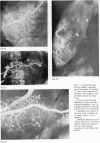Abstract
Retrograde pancreatography has been carried out at necropsy in 120 cases and the results have been analysed in statistical detail. With increasing age, changes in pancreatic anatomy occur which must not be taken to indicate pathology. These changes are: (1) low or ptotic position of the pancreas so that the papilla of Vater is below the level of L3; (2) calcification of the splenic and superior mesenteric arteries which produce calcific densities around the pancreas; (3) increasing width of main pancreatic duct along its whole length at about 8% per decade; in the elderly, widths of 1 cm can occur in the main duct in the head of the pancreas without evidence of obstruction; (4) formation of ductular ectasia which affects mainly the interlobular ductules but also intralobular ductules; (5) some ectatic ducts reach the dimensions of cysts, ie, 1-2 cm in diameter.
Other morphological changes which have been demonstrated and which may produce difficulties in radiological interpretation are: (a) narrowed ducts not due to stricture; (b) space-occupying lesions due to superior mesenteric artery, splenic artery, aorta, vertebral osteophytes, sympathetic ganglion, and lymph nodes; (c) metastases in the pancreas—these must be distinguished from primary pancreatic carcinoma.
The implications of these findings for endoscopy and isotope pancreatic scanning will be mentioned.
Full text
PDF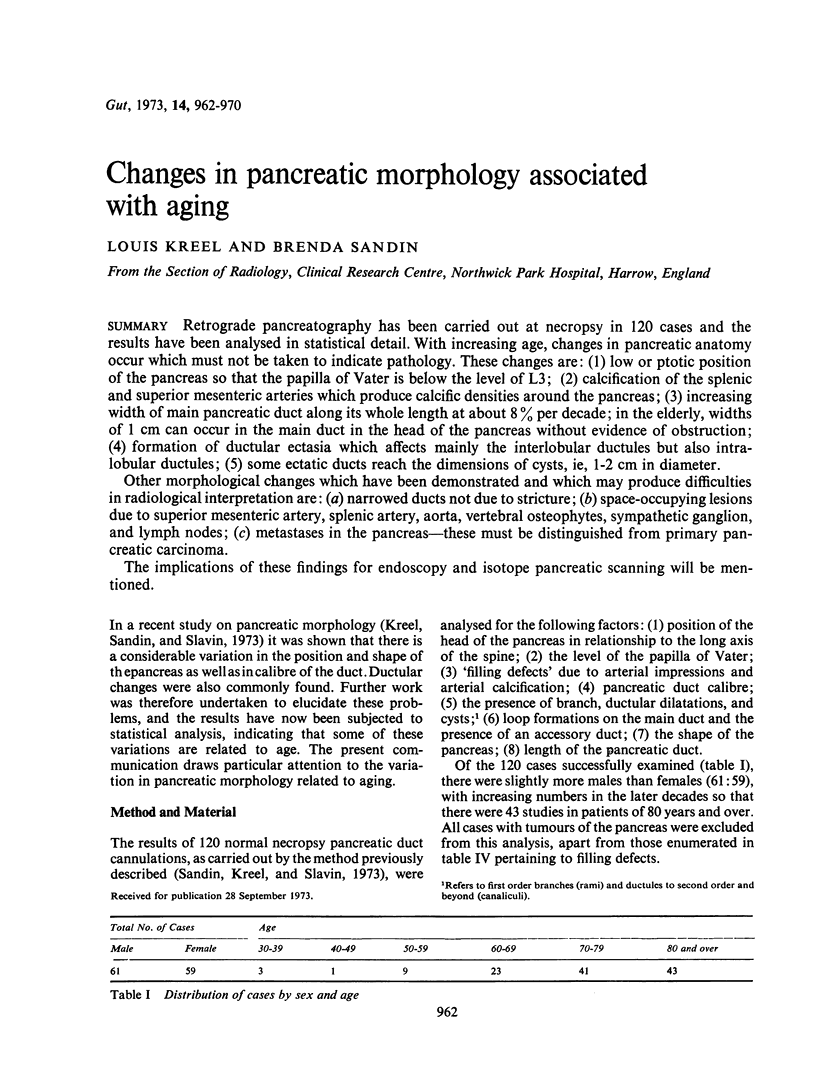
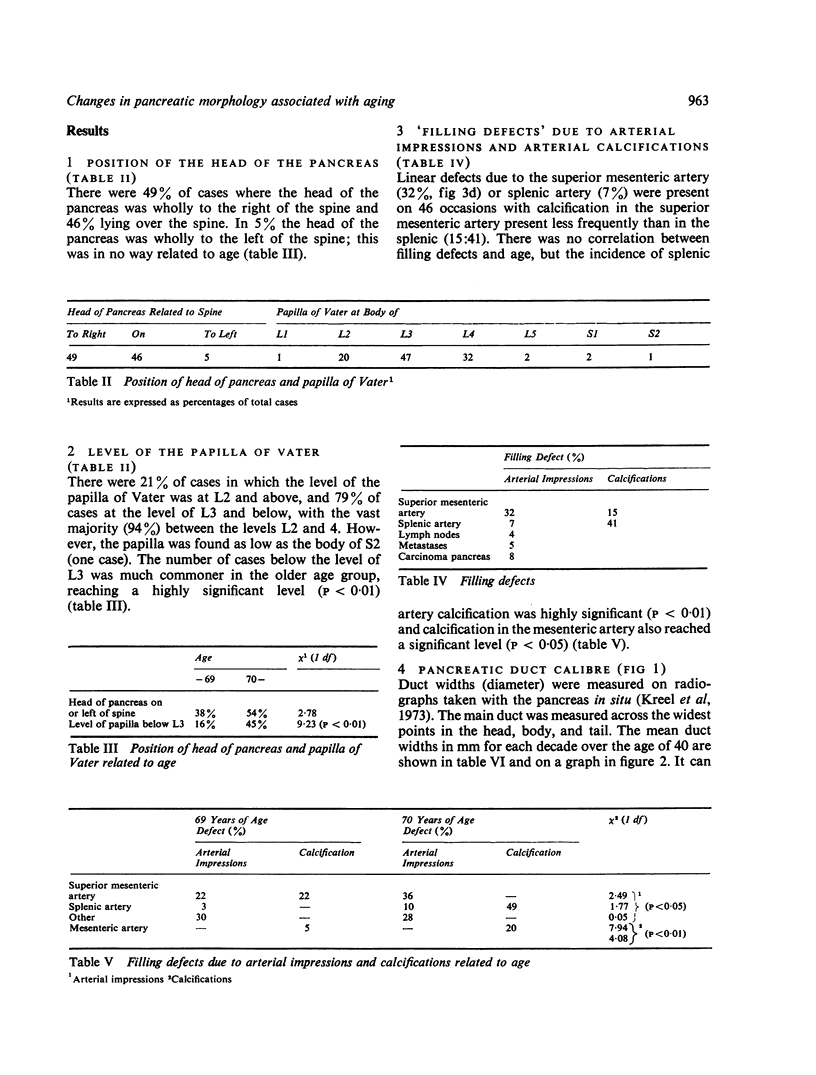
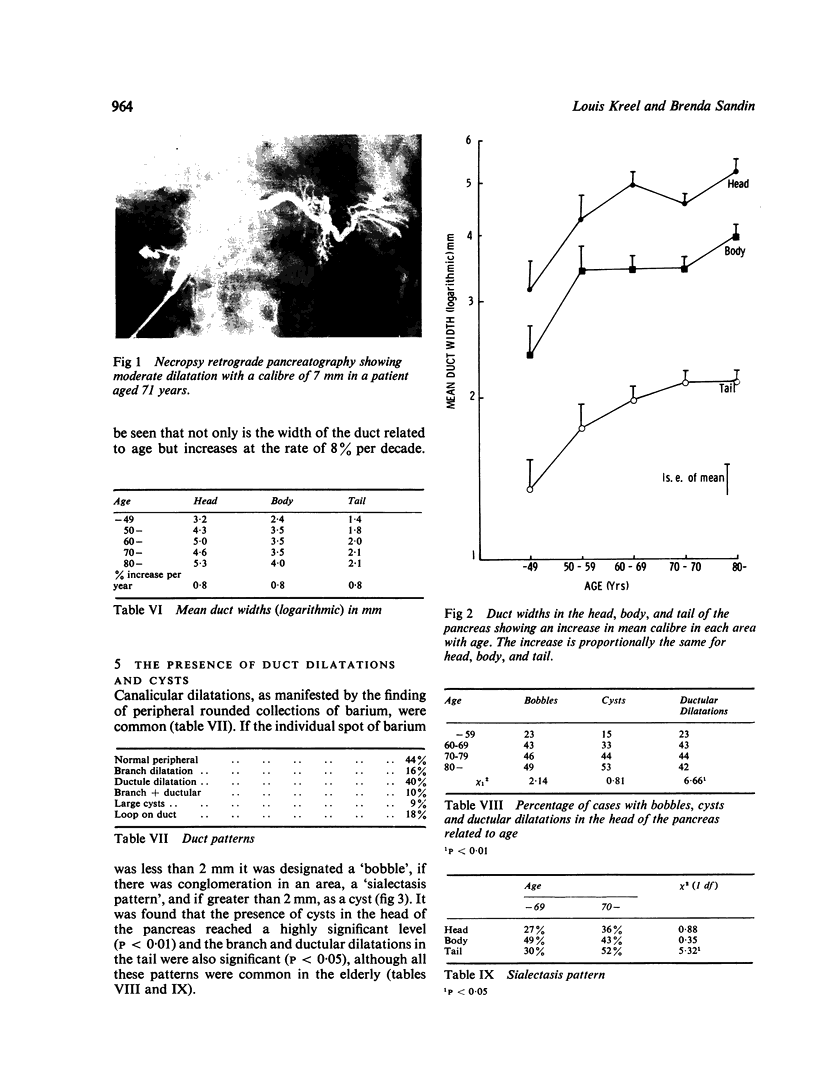
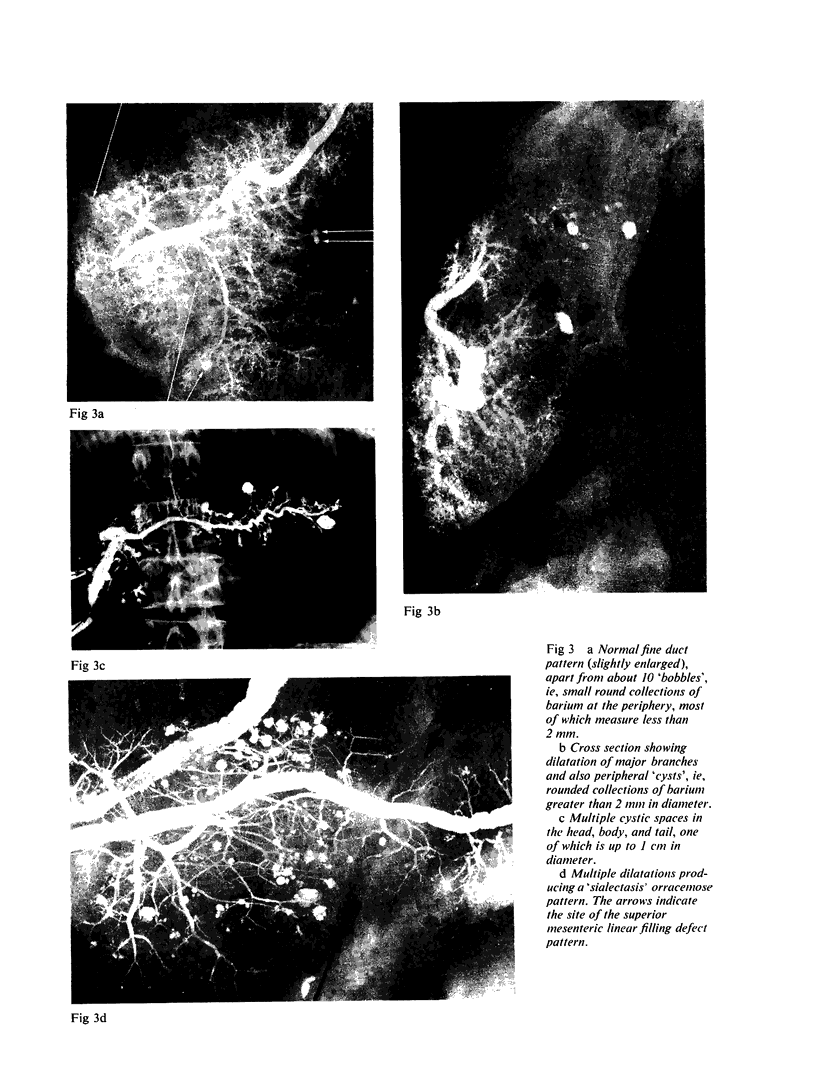
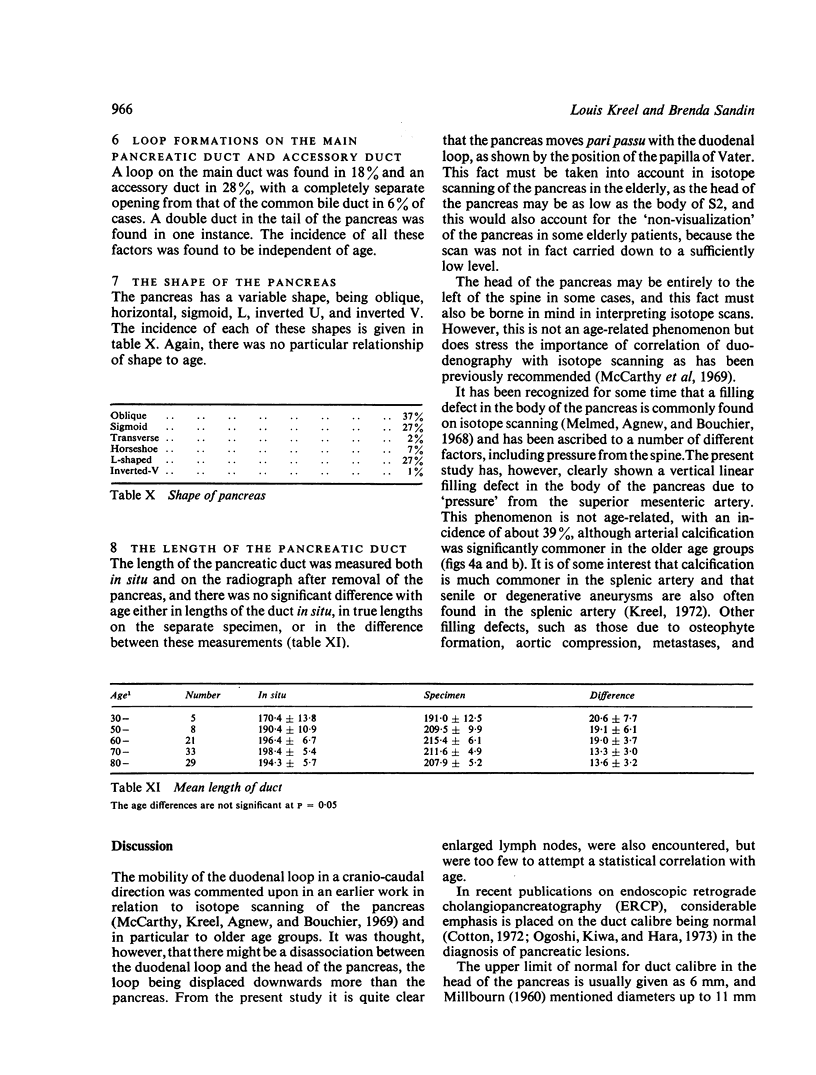
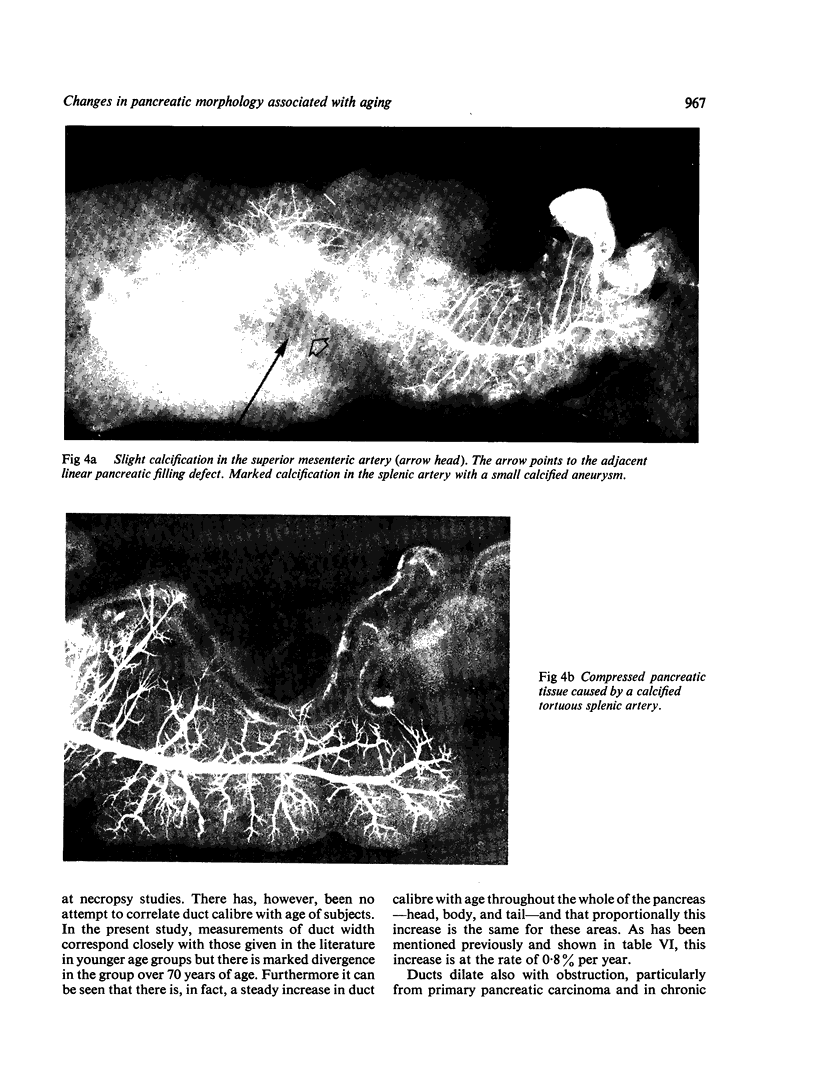
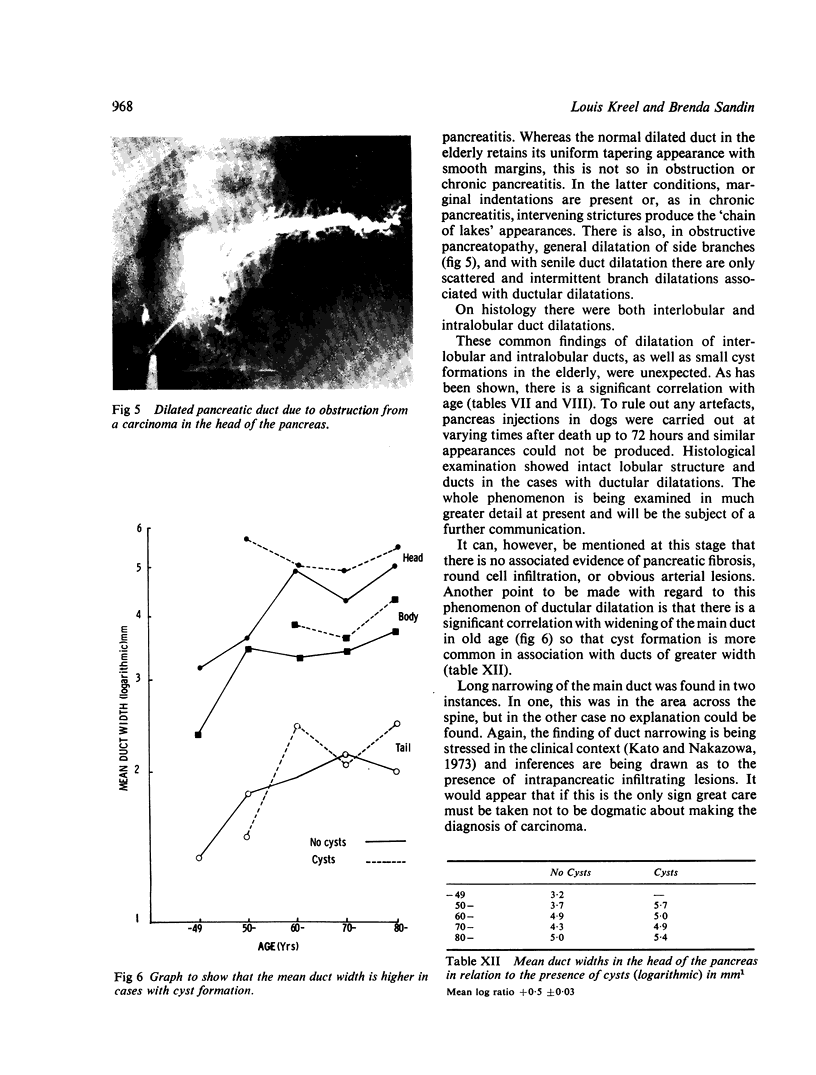
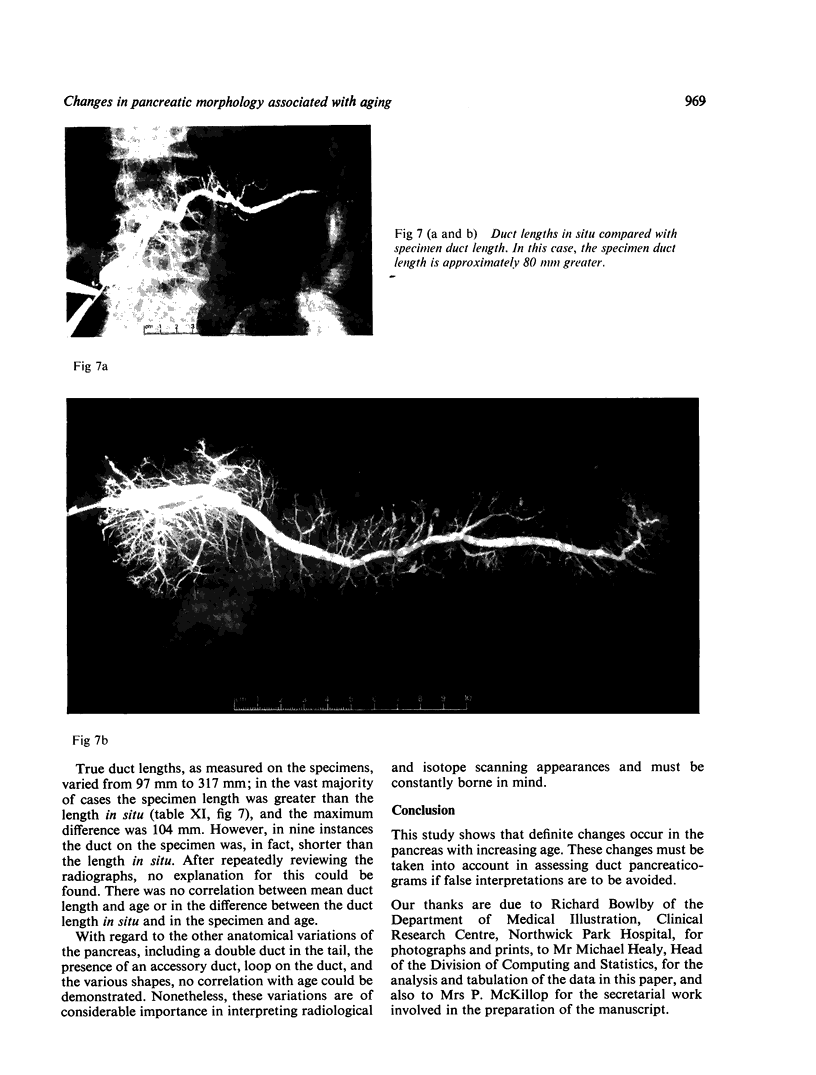
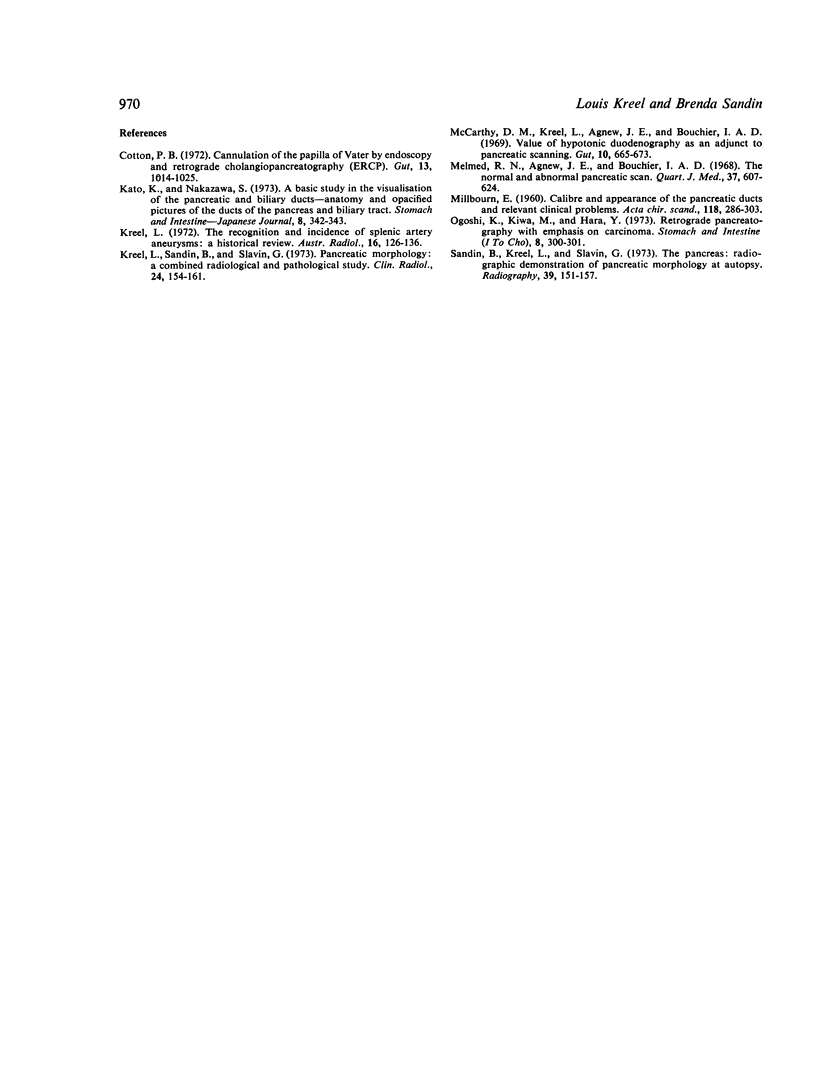
Images in this article
Selected References
These references are in PubMed. This may not be the complete list of references from this article.
- Cotton P. B. Cannulation of the papilla of Vater by endoscopy and retrograde cholangiopancreatography (ERCP). Gut. 1972 Dec;13(12):1014–1025. doi: 10.1136/gut.13.12.1014. [DOI] [PMC free article] [PubMed] [Google Scholar]
- Kreel L., Sandin B., Slavin G. Pancreatic morphology--a combined radiological and pathological study. Clin Radiol. 1973 Apr;24(2):154–161. doi: 10.1016/s0009-9260(73)80074-1. [DOI] [PubMed] [Google Scholar]
- Kreel L. The recognition and incidence of splenic artery aneurysms. A historical review. Australas Radiol. 1972 Jun;16(2):126–136. doi: 10.1111/j.1440-1673.1972.tb01339.x. [DOI] [PubMed] [Google Scholar]
- MILLBOURN E. Calibre and appearance of the pancreatic ducts and relevant clinical problems. A roentgenographic and anatomical study. Acta Chir Scand. 1960 Feb 29;118:286–303. [PubMed] [Google Scholar]
- McCarthy D. M., Kreel L., Agnew J. E., Bouchier I. A. Value of hypotonic duodenography as an adjunct to pancreatic scanning. Gut. 1969 Aug;10(8):665–673. doi: 10.1136/gut.10.8.665. [DOI] [PMC free article] [PubMed] [Google Scholar]
- Melmed R. N., Agnew J. E., Bouchier I. A. The normal and abnormal pancreatic scan. Q J Med. 1968 Oct;37(148):607–624. [PubMed] [Google Scholar]
- Sandin B., Kreel L., Slavin G. The pancreas-radiographic demonstration of pancreatic morphology at autopsy. Radiography. 1973 Jun;39(462):151–157. [PubMed] [Google Scholar]



